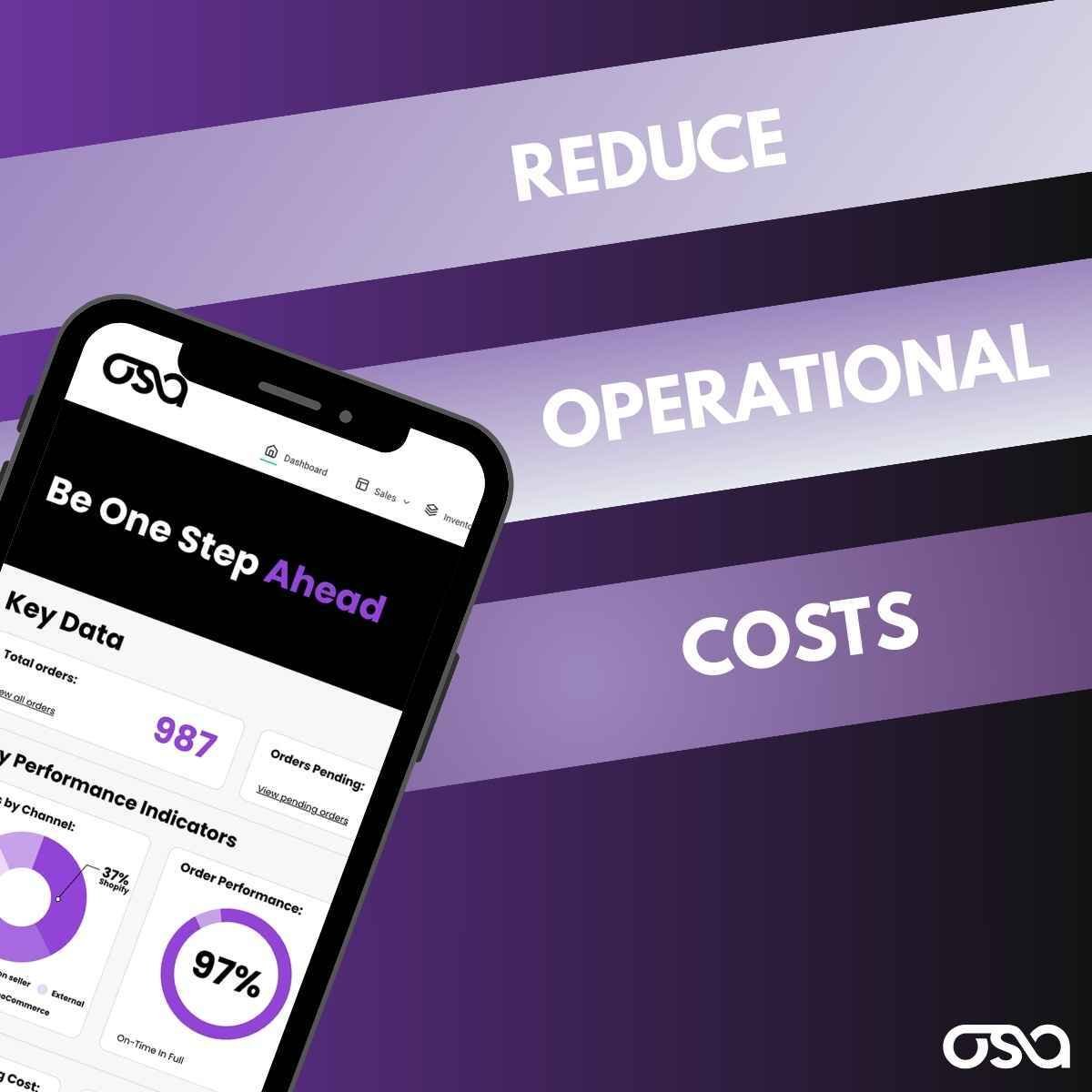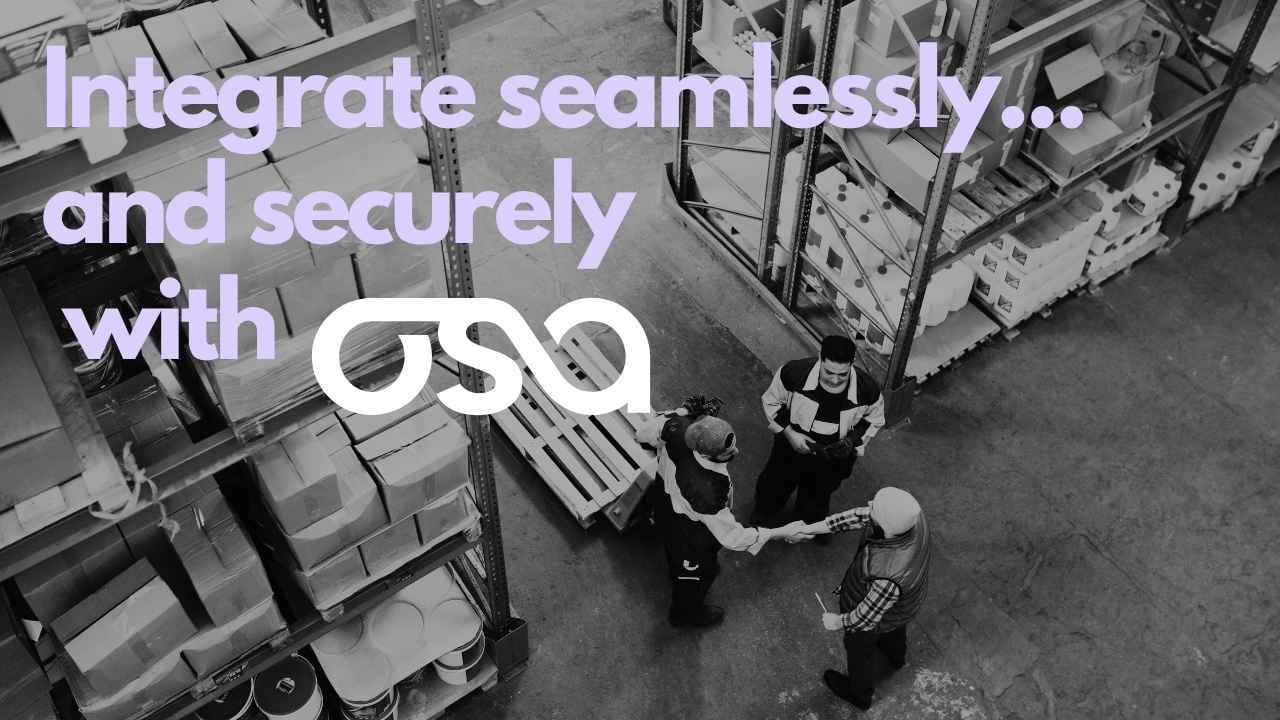3 min read
How to Reduce Logistics Costs with Supply Chain Integrations
![]() Osa Commerce
:
August 27, 2025
Osa Commerce
:
August 27, 2025

Unlock significant cost savings and operational efficiency by integrating your supply chain systems.
The Hidden Costs of Disconnected Systems
Disconnected systems and poor data quality are common issues for third-party logistics (3PLs) providers, which lead to a myriad of hidden costs. It is estimated that businesses lose an average of $9.7 million per year when they rely on labor-intensive workarounds and disparate systems.
Adding redundant technology for inventory, order management, warehouse management, and transportation also leads to duplicated efforts, manual data entry, and increased error rates. These inefficiencies not only drive up operational costs but also slow down service delivery, impacting customer satisfaction.
This is where supply chain integrations through unified commerce platforms change the game for 3PLs and their brand customers. By eliminating duplicate systems and consolidating operations into a one streamlined ecosystem, 3PLs can unlock massive efficiency and achieve measurable cost savings.
Eliminating Duplicate Systems and Reducing Operational Costs
With multiple systems, data silos emerge, creating barriers to the sharing of real-time information and decision-making. This fragmentation can lead to stockouts, overstock situations, and delayed shipments—all of which contribute to higher logistics costs and reduced competitiveness.
Stop Juggling Platforms
Most 3PLs and brands juggle multiple platforms. From enterprise resource planning (ERPs), inventory and order management, to warehouse management and transportation, each system has its own requirements:
- Separate licensing fees
- Manual data entry and reconciliation
- Integration costs with partners
- IT overhead to manage multiple vendors

The result? Rising operational costs, inconsistent data, and slower time-to-market. Worse still, duplicate systems create blind spots across the supply chain, making it harder to optimize inventory levels, track shipments in real-time, or adapt to disruptions.
How Supply Chain Integration Drives Cost Efficiency
Supply chain integrations aren't just about technology—it is about enabling a single source of truth across the entire ecosystem. Through integrations, supply chain systems can significantly enhance cost efficiency by consolidating systems to minimize redundant processes and reduce the need for maintaining multiple software licenses and IT infrastructure.
A platform like Osa Unified Commerce brings together integrations to orders, warehouse, fulfillment, and last mile into one comprehensive solution for:
- Consolidated Technology Spend: Eliminate duplicate licenses and vendor contracts
- Reduced Labor Costs: Automate data flow between systems to cut down on manual entry and errors
- Secure Cloud-AI: Built-in cybersecurity with lower overall expenditures on managing and maintaining hardware and software, providing on-demand needs.
- Lower IT Maintenance: One integrated platform means less time (and fewer dollars) spent on patching and managing multiple solutions
- Optimized Inventory: Real-time visibility prevents costly overstocks and stockouts
- Faster Fulfillment: Streamlined workflows reduce order cycle times, cutting operational expenses
Moreover, a unified system enables real-time data sharing across the supply chain, allowing for more accurate forecasting, improved inventory management, and timely order processing. These efficiencies translate into lower labor costs, reduced inventory carrying costs, and faster turnaround times, ultimately improving the bottom line for both 3PLs and their brand partners.
Supply Chain Orchestration with Cutting-Edge Technologies
Explore how cutting-edge technologies are revolutionizing supply chain management, enhancing efficiency, and driving business success.
read more
Supply Chain Cyberattacks: How 3PLs & Retailers Must Respond
Cyberattacks leave shelves empty. Discover how to enhance resilience and ensure operational continuity in the face of threats for 3PLs and retailers.
Read More
Utilizing AI for Advanced Inventory Forecasting
3PLs are continually seeking ways to stay ahead. Utilizing AI with Osa Commerce for inventory forecasting can provide an edge in optimizing operations and maximizing profits.
Read More
The Role of Technology in Supply Chain Integrations
Technology plays a pivotal role in achieving supply chain integration. Advanced platforms, such as Osa Unified Commerce, offer real-time inventory tracking, order monitoring, and performance analytics, all within a single interface. This centralized approach ensures that all stakeholders have access to a 'single source of truth,' facilitating better collaboration and decision-making.
Additionally, technologies such as AI and machine learning can further enhance supply chain operations by predicting demand patterns, optimizing routes, and automating routine tasks. This not only reduces operational costs but also enhances the agility and responsiveness of the supply chain.
Osa Zero Integration Management
Effortless integrations. Enhanced efficiency.
Instantly share real-time data with Osa Zero for smarter decisions by seamlessly connecting ERPs, marketplaces, shopping carts, e-commerce platforms, and demand channels—all in one unified view.
Break down silos, stay connected, and unlock your logistics potential—from procurement to last mile.
Benefits of Unified Commerce for 3PLs and Brands
Unified commerce offers numerous benefits for 3PLs and brands. By consolidating various functions into one platform, businesses can achieve greater visibility and control over their operations. This holistic view enables more efficient resource allocation, improved inventory accuracy, and faster order fulfillment.
For 3PLs
Unified commerce can create a significant competitive advantage by enabling them to offer more reliable and faster services to their clients—from seamless integrations to lower costs, improved warehouse efficiency, and the ability to strengthen client relationships.
For brands
This translates to real-time visibility across sales channels, improved demand forecasting, reduced carrying costs, and more accurate delivery times, enabling better management of customer expectations.
Together, this creates a competitive advantage in a crowded market where cost efficiency and customer experience define success.
Implementing a Collaborative Visibility Platform
Implementing a collaborative visibility platform can be a game-changer for logistics operations.
This platform provides end-to-end visibility across the supply chain, allowing 3PLs and brands to track shipments, monitor performance, and resolve issues in real-time.
end-to-end visibility across the supply chain, allowing 3PLs and brands to track shipments, monitor performance, and resolve issues in real-time.
By fostering greater transparency and collaboration, a visibility platform helps to eliminate bottlenecks, reduce lead times, and improve overall supply chain efficiency. The result is a more agile, responsive, and cost-effective supply chain that can adapt to market changes and customer demands with ease.
No Longer Optional
In an era where logistics costs continue to climb, supply chain integration is no longer optional—it’s essential. For 3PLs and their brand partners, adopting a unified commerce approach through Osa Commerce isn’t just about operational efficiency. It’s about transforming cost savings into a strategic advantage that drives growth.
Ready to eliminate duplicate systems and start saving?







